What do you think of when someone mentions ‘sustainable landscaping’ to you?
Do visions of stark landscapes with a few dried out plants and cactus come to mind? Nothing could be further from the truth. Sustainable landscapes are beautiful, low-maintenance and drought-tolerant.
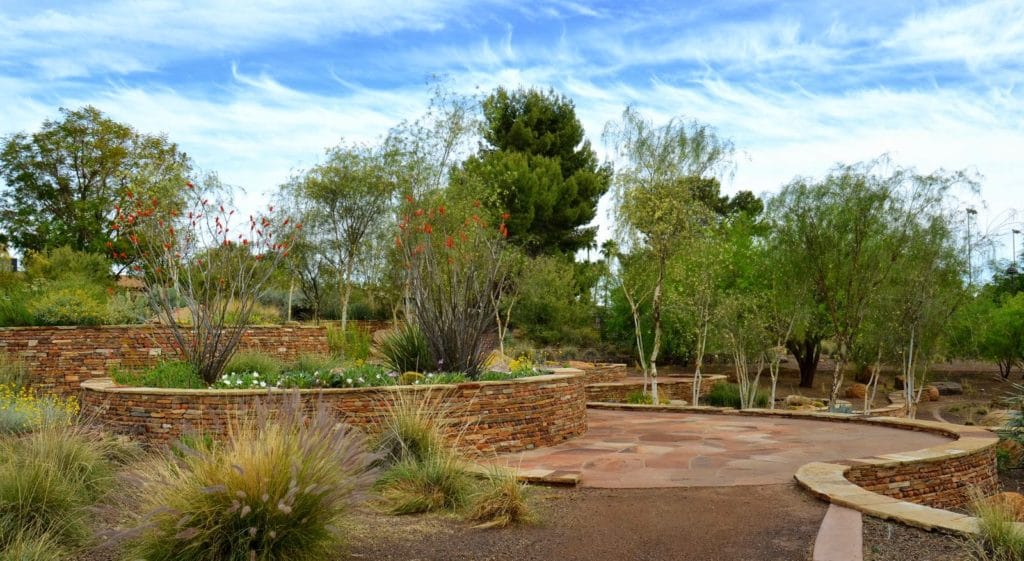
Scottsdale Xeriscape Demonstration Garden
Last week, I spent an entire day visiting some great sites throughout the greater Phoenix area, which have some great examples of sustainable landscaping.
Now if you are thinking that I did this all by myself, you would be wrong. My friend and fellow southwest-blogger, Pam Penick, came up for a visit from Austin, Texas to see how we do sustainable landscaping here in Phoenix.
Our first stop was a visit to Arizona State University’s Polytechnic Campus in the East Valley.
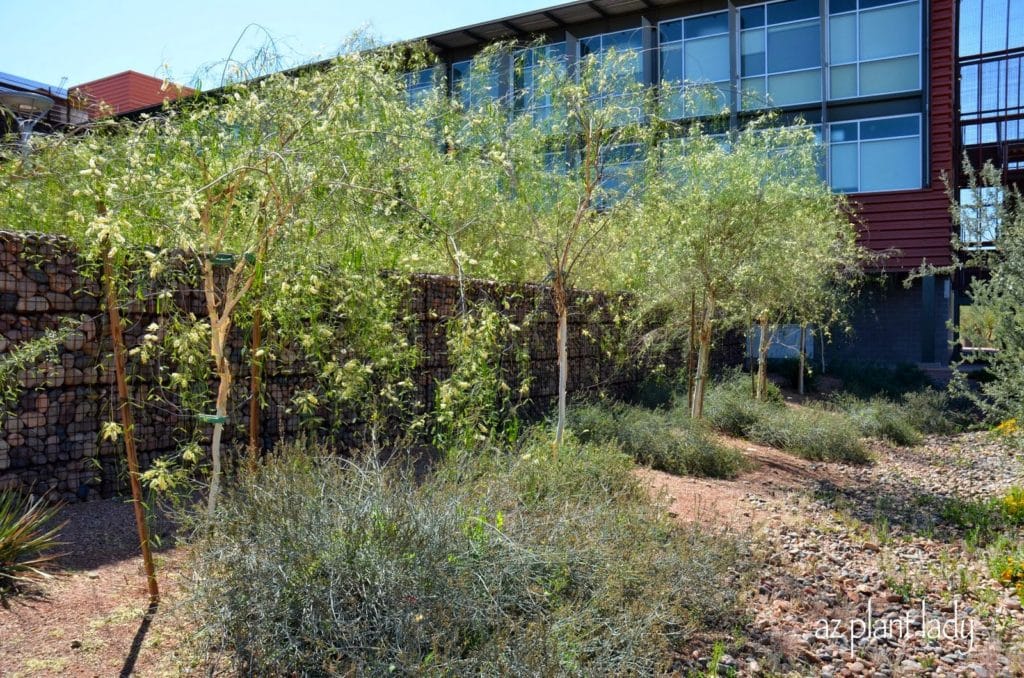
A row of Palo Blanco (Acacia willardiana) trees stand along the side of an arroyo that catches rain water.
The campus is located on a former Air Force Base and it was decided that the lackluster appearance of the location needed a huge facelift.
The new academic complex consists of several buildings connected by separate courtyards – each with great examples of sustainable landscaping.
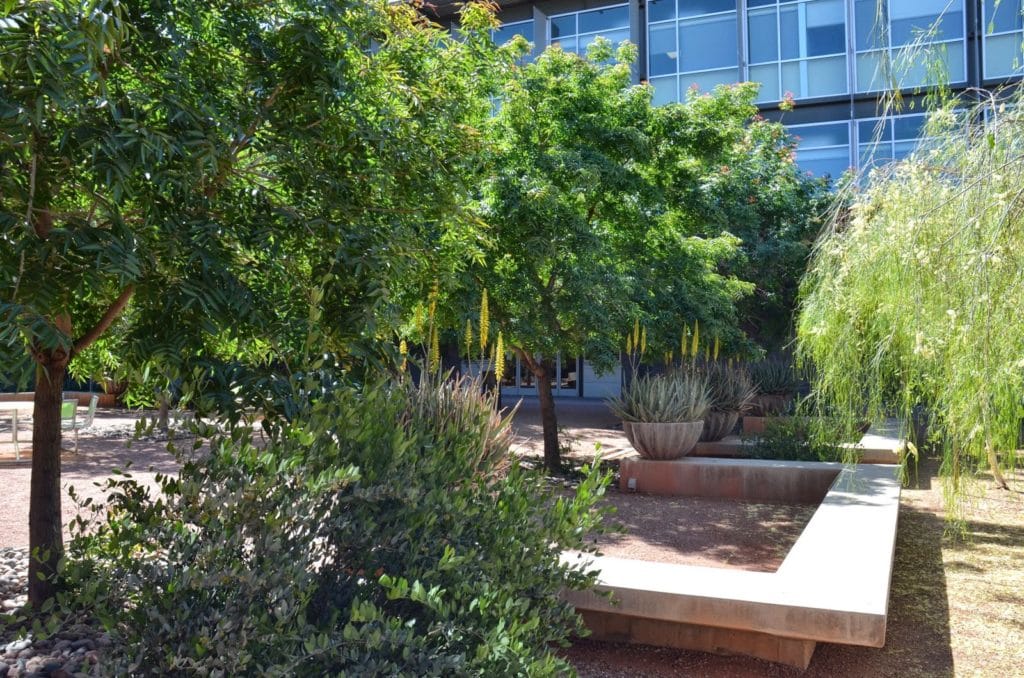
Chinese Pistache (Pistacia chinensis) trees, Jojoba (Simmondsia chinensis) shrubs and potted Aloe vera (Aloe barbadensis)
Each courtyard had inviting, shady areas along with sunny spots so that whatever the season, students were drawn to enjoy the outdoors.
All the plants were arid-adapted and relatively low-maintenance.
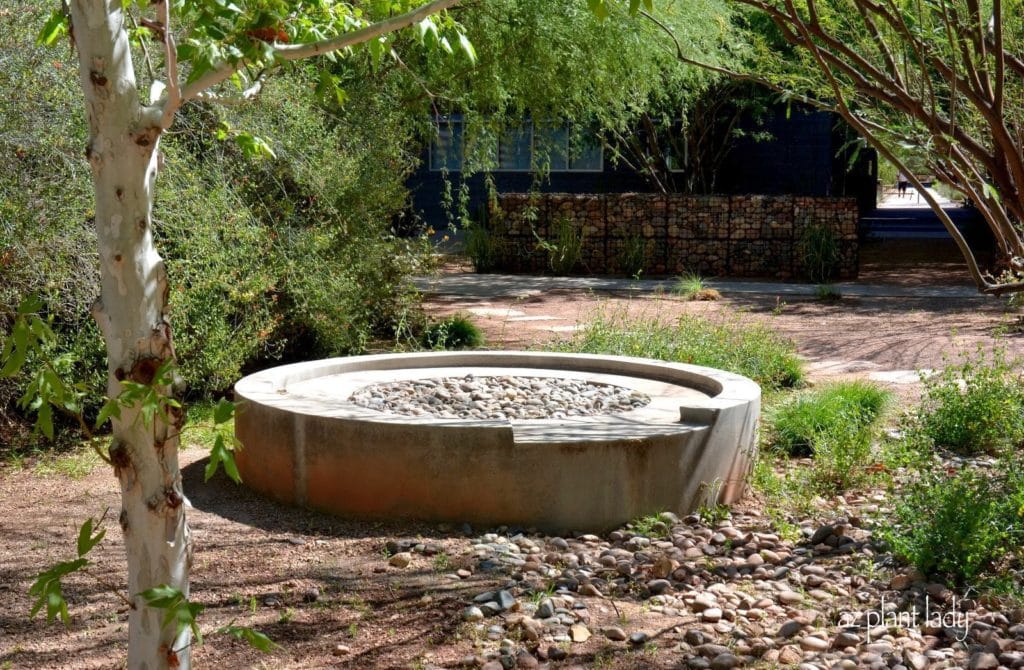
Concrete cisterns collected sporadic rainfall and the overflow is directed toward a swale that collected excess storm water. Plants along the swale benefit from the extra water.
Most of the area within the courtyards was covered in stabilized, decomposed granite (DG) that allows rainwater to permeate and keeps the ‘heat island’ effect away in the absence of excess concrete.
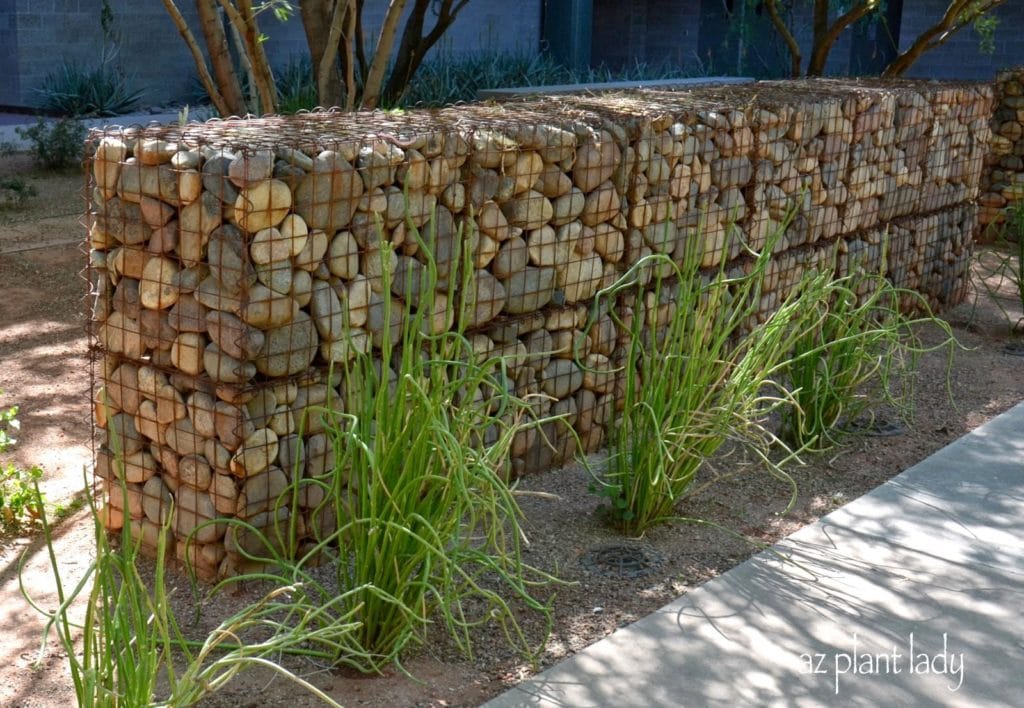
Gabion wall with Lady’s Slipper (Pedilanthus macrocarpus)
Gabion walls are filled with river rock that had been saved from the previous site and were used throughout the complex to create low walls. One of my favorite succulents, lady’s slipper, looks great when planted against walls like this one.
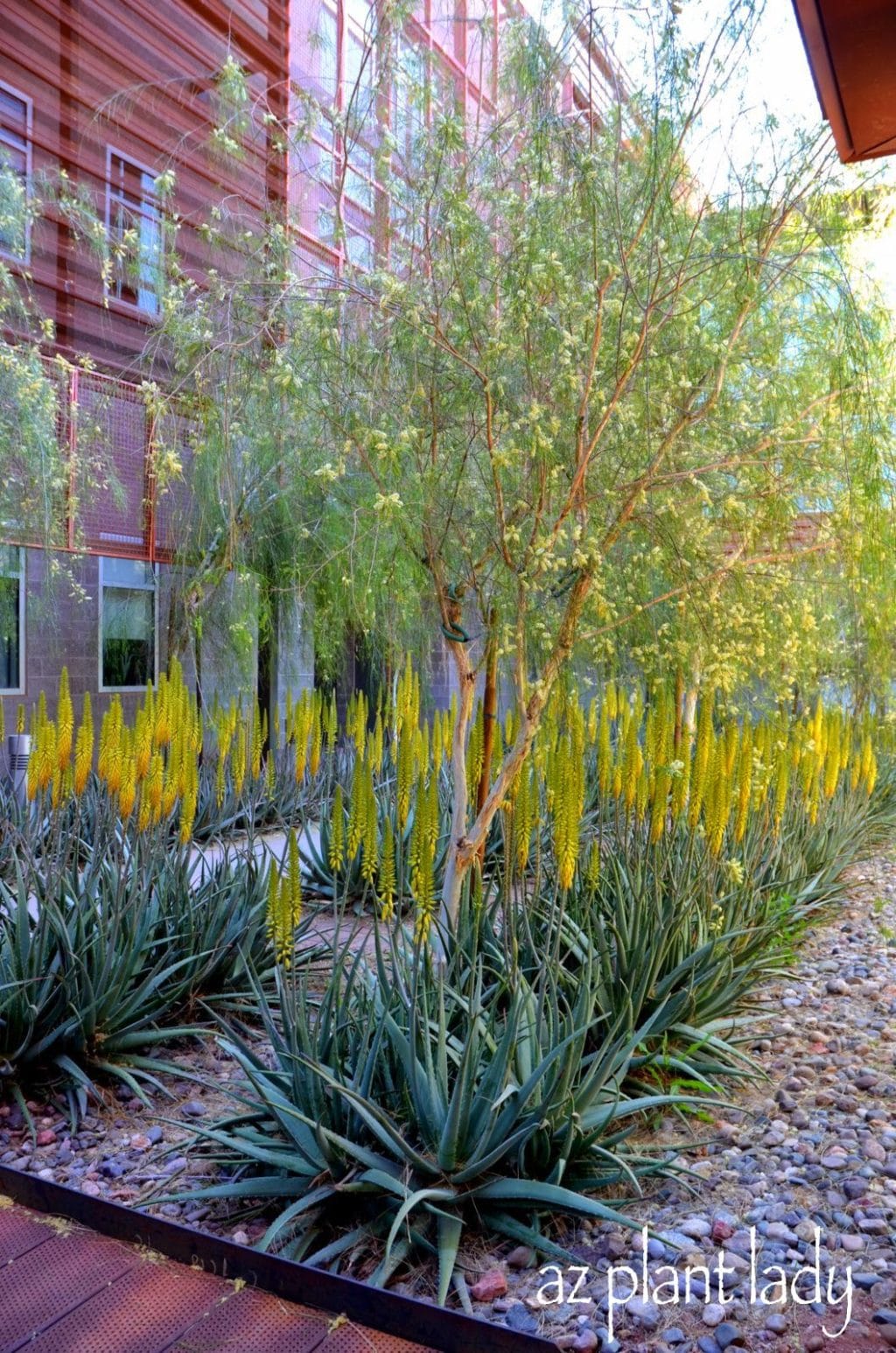
Aloe Vera planted in rows underneath Palo Blanco trees.
I must admit that I have not been a huge fan of aloe vera plants. But, after seeing how effectively they were used throughout the courtyards, I have changed my mind.
They are so striking when used in masses like this. Of course, I realize that this is their best season and soon they will be done flowering, but even when out of flower, the striking texture of the leaves would still look great in this area.
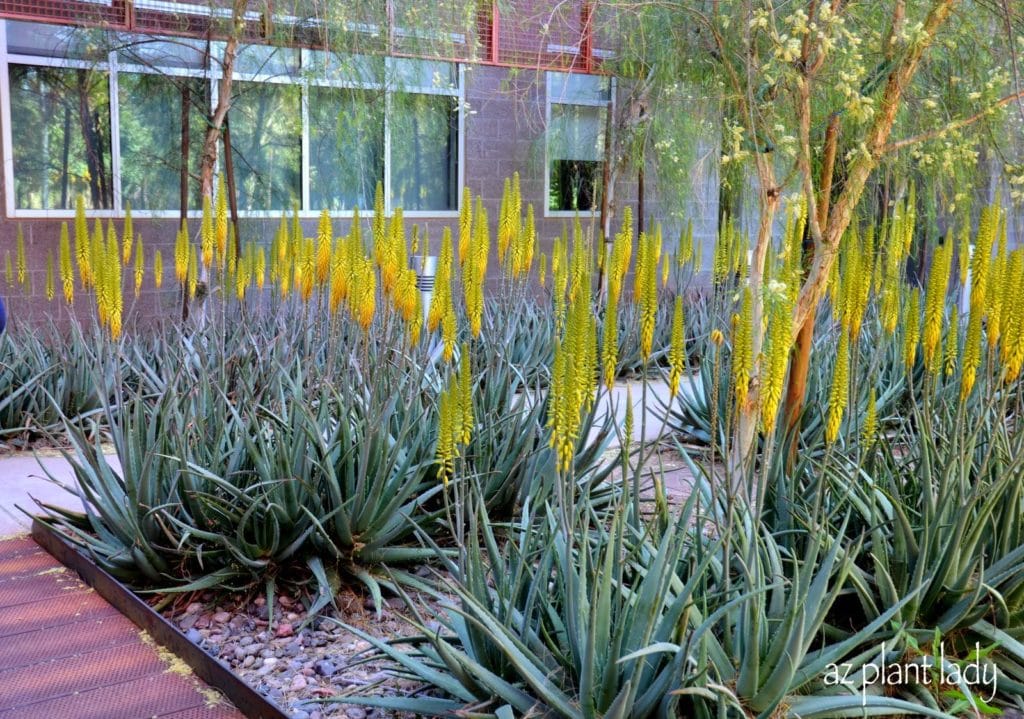
Aloe Vera
Here is another photo of the aloe vera – I’m really loving this plant now.
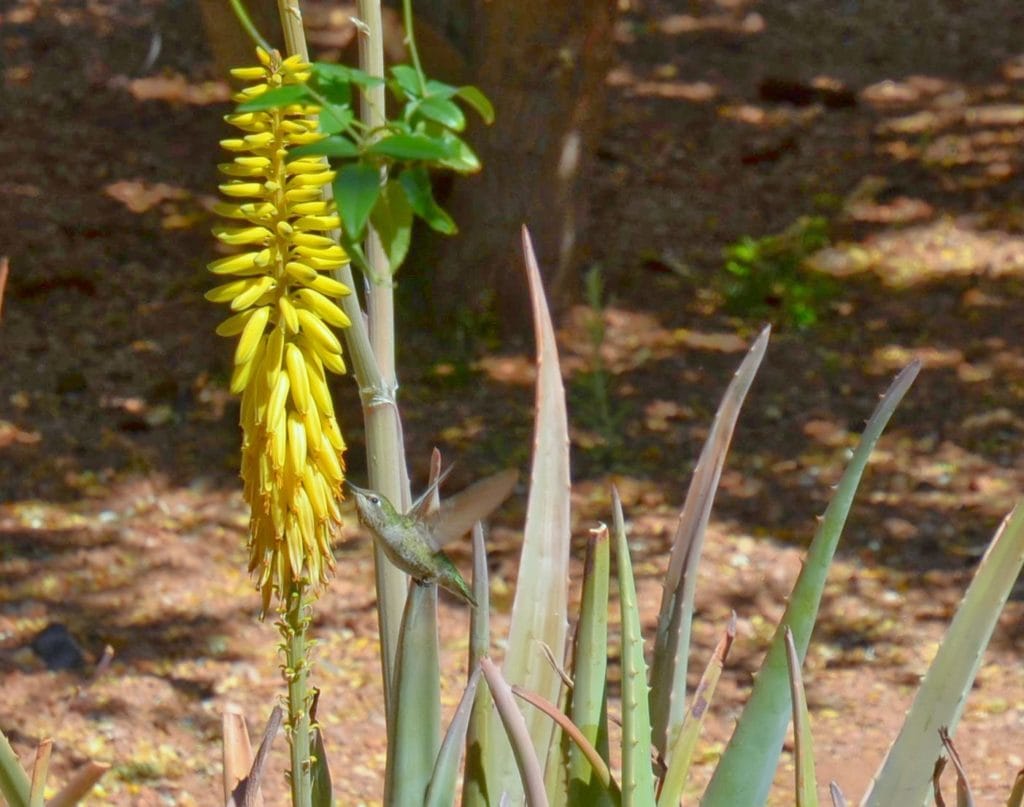
Anna’s Hummingbird and Aloe Vera flower.
The hummingbirds were very busy feeding from the flowers of the aloe.
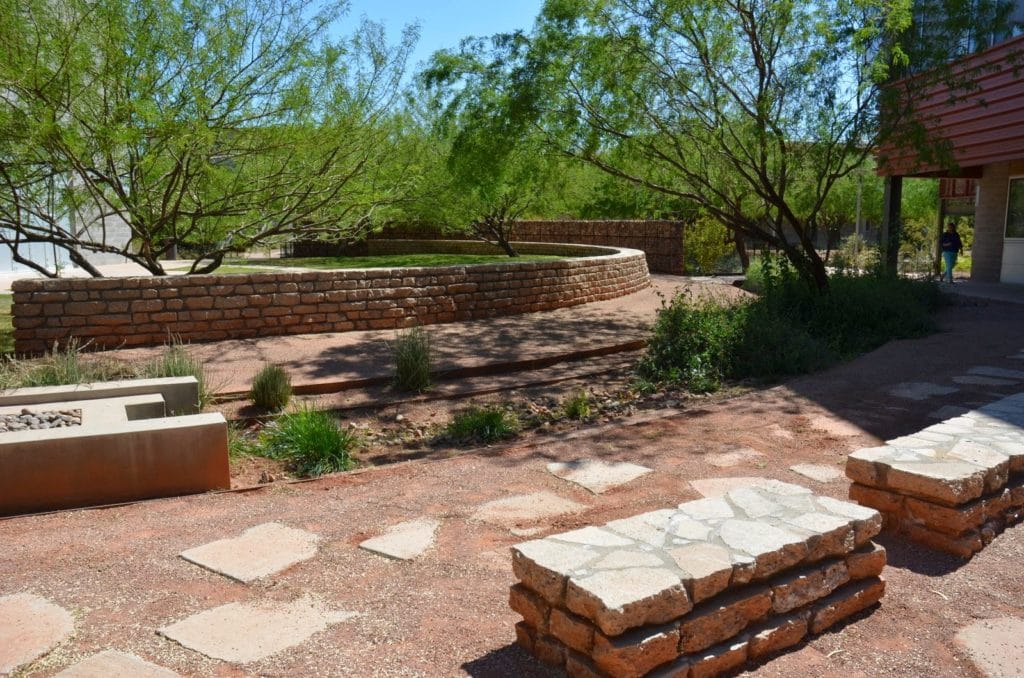
The concrete that was removed during construction was repurposed into step stones, benches and retaining walls.
Called ‘urbanite’, this recycled material is becoming increasingly popular and is one great choice for hardscapes.
If you are renovating your landscape and concrete removal is part of that – think about reusing it in the landscape. Want to use ‘urbanite’ and don’t have any broken concrete? You can sometimes find it available on Craigslist.
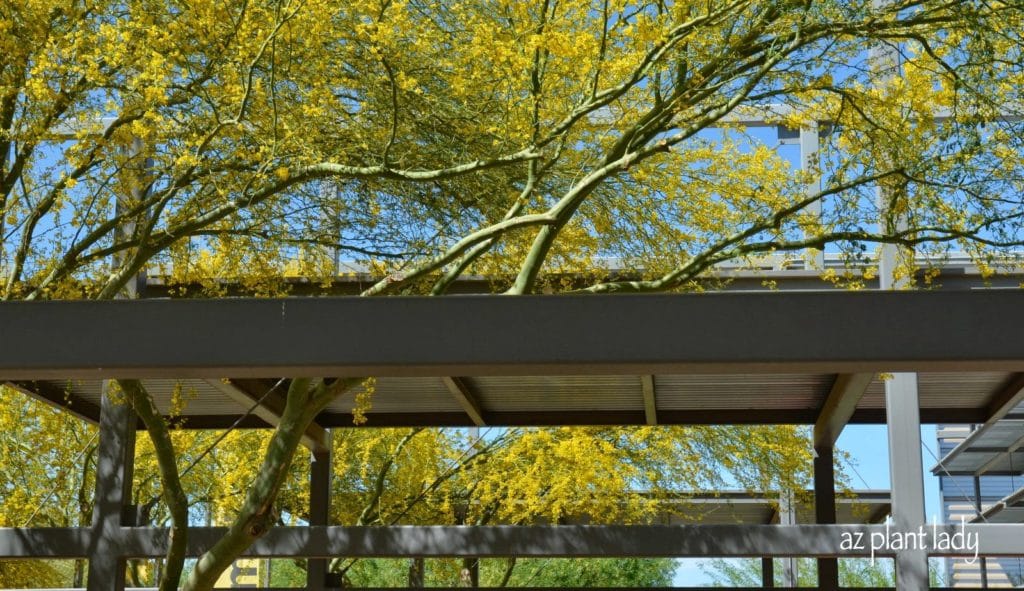
Palo verde trees were in full bloom and used to great effect with the straight, modern lines of the building.
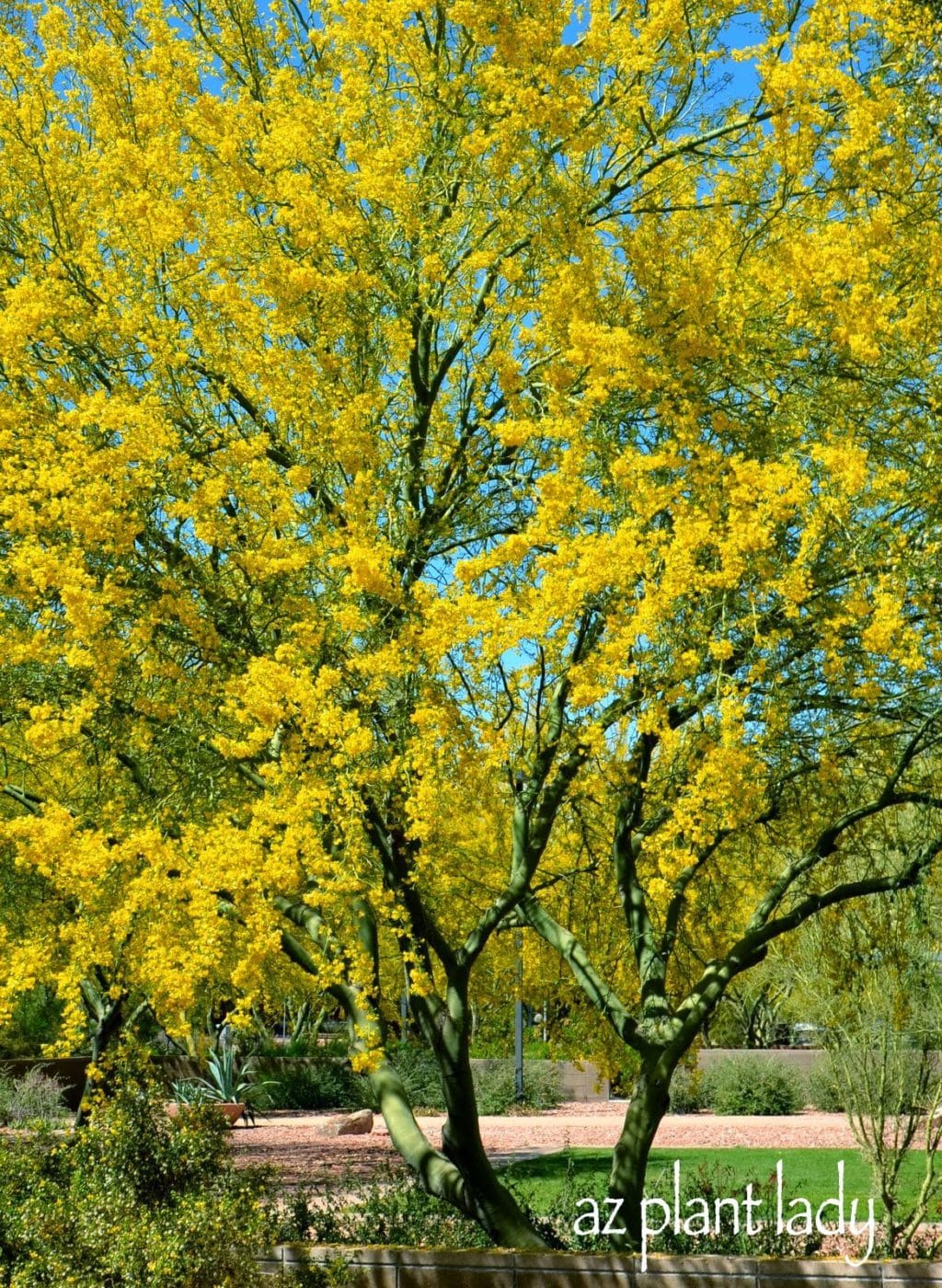
One of the reasons that I love palo verde trees so much (I have three in my own garden), is that they have great branch architecture – meaning that they shape of the branches and how they grow is beautiful.
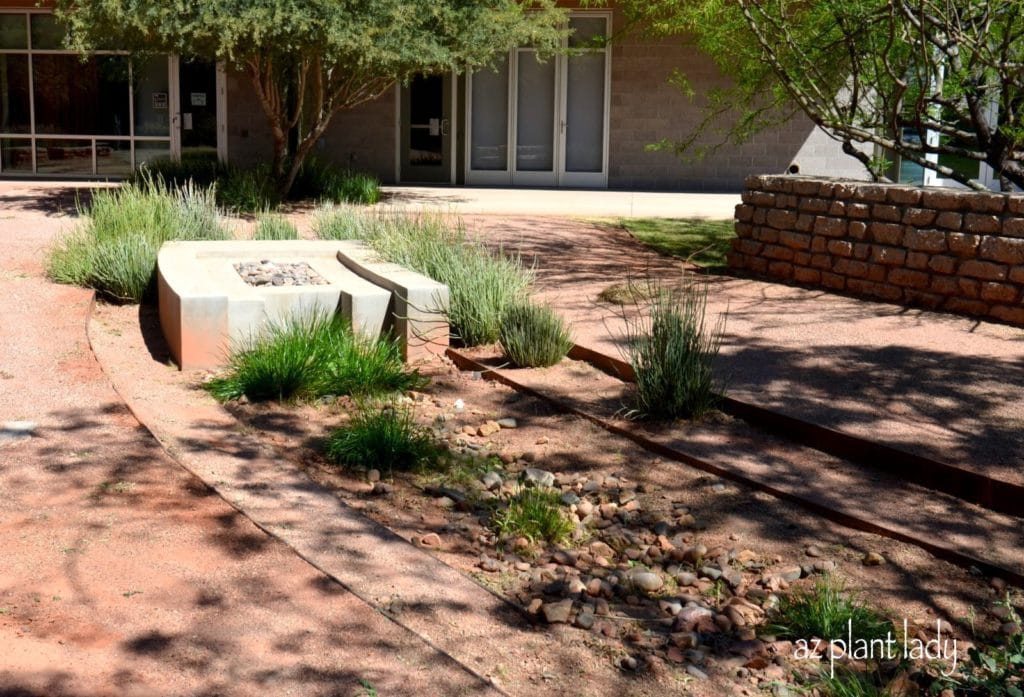
During heavy rainfall, excess water runs from the cistern down the swale, watering the plants alongside it.
River rock removed during construction was saved and reused for the cisterns and the swales.
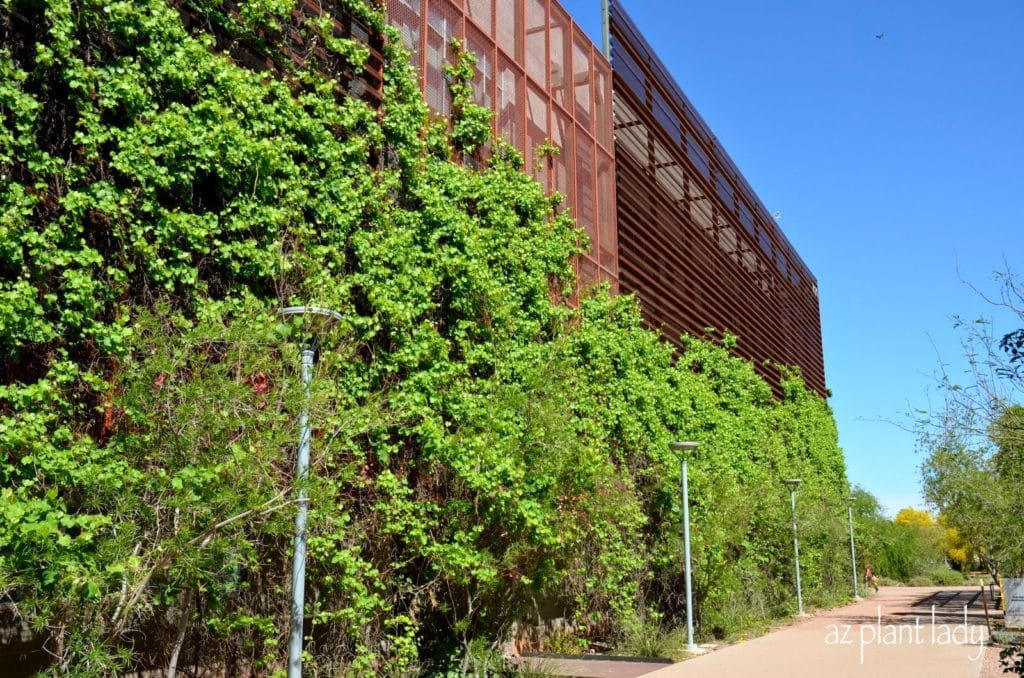
The outside of the buildings were covered with grape ivy, which help to keep the building cooler as it helps shield the building from the sun’s rays.
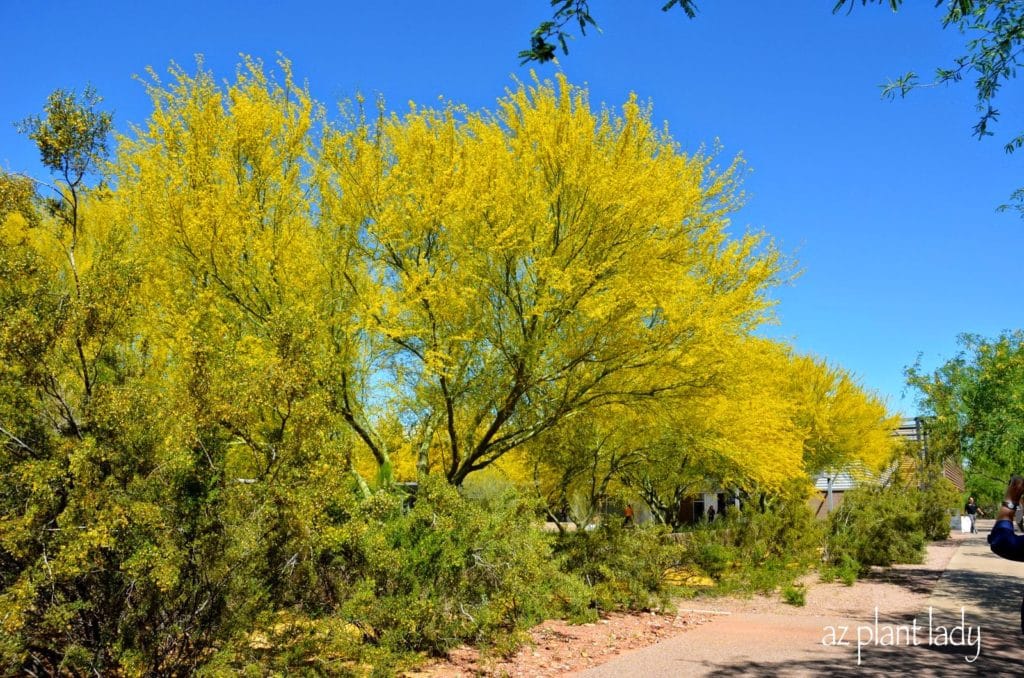
The walkway the ran alongside the buildings was planted with Sonoran desert natives such as Palo Verde and Creosote.
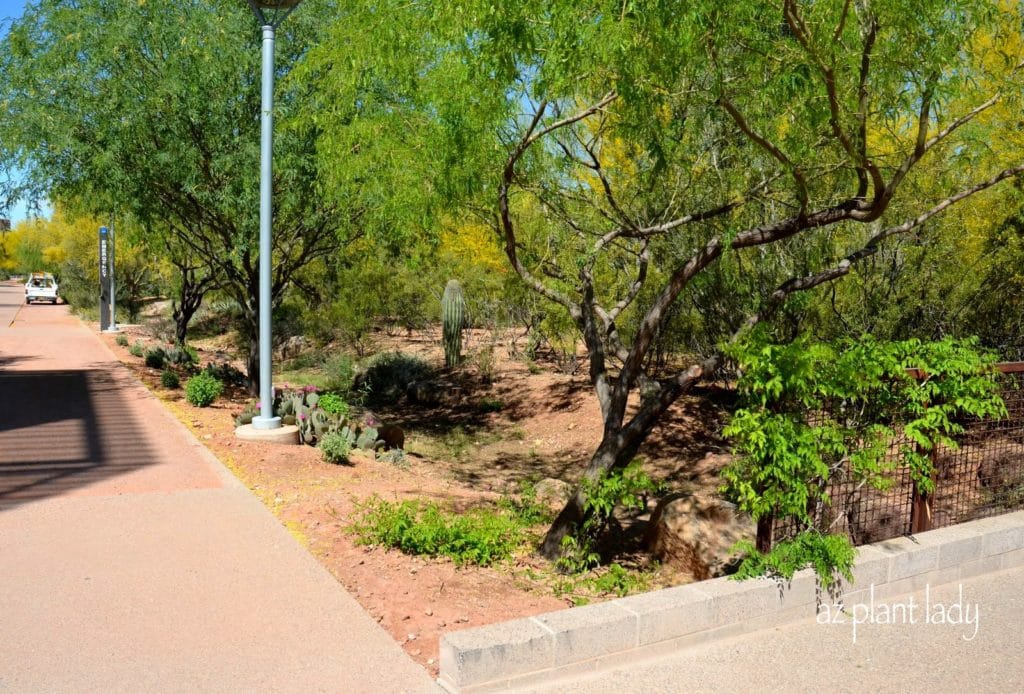
Along the walkways, arroyos were created to help channel storm water in this area that was previously covered in concrete and would flood frequently.
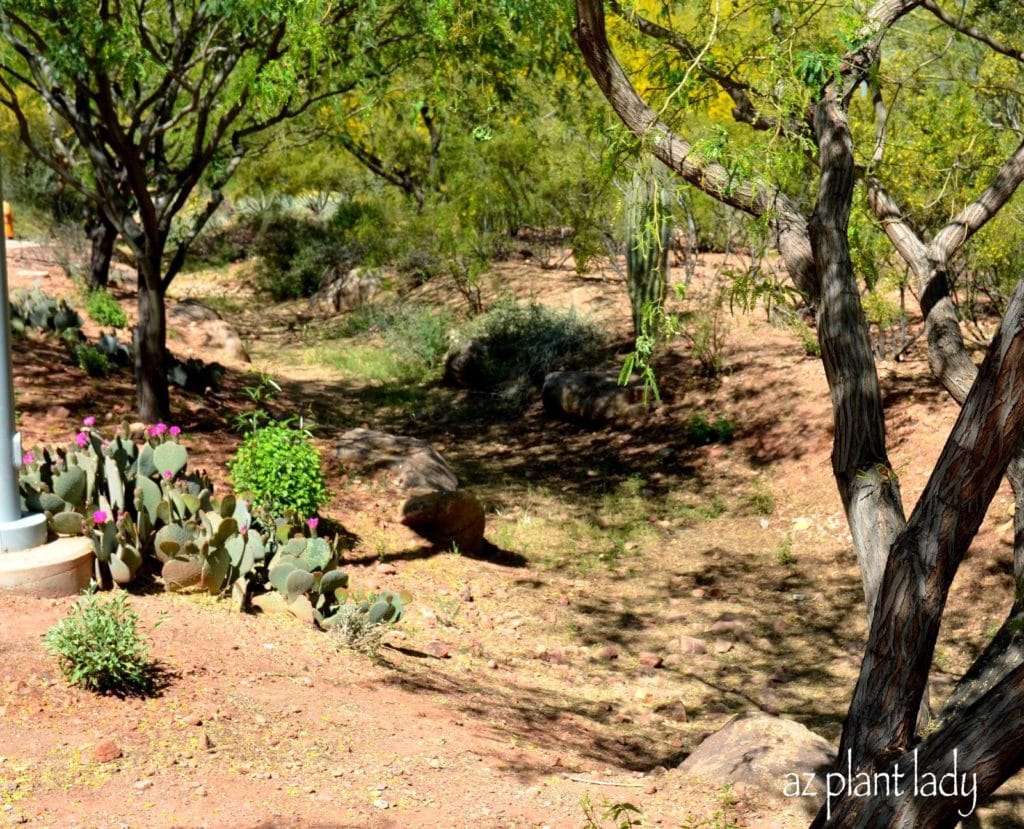
Mesquite trees were salvaged for use in this area and smaller shrubs and cacti were planted along the arroyo.
There are many different elements of this landscape that contribute to its sustainability – the use of recycled plants and materials, areas formerly flooded now direct storm water toward cisterns and plants, reduced concrete areas decrease the heat island effect, and finally arid-adapted plants decrease the need for supplemental water.
*I attended school at the main campus of ASU in Tempe. Since then, my major (Urban Horticulture) has been moved to the Polytechnic Campus. How I wish that I had had the opportunity to study at this beautiful campus!
This landscape was designed by Ten Eyck Architects who won an ASLA award for the sustainable design of the landscape. To learn more about this well-designed landscape, click here.
Pam and I had a wonderful visit and this was just the first stop on our tour!
Next time, I will show you the next spots along our journey including some innovative landscapes that need no supplemental water, while still looking beautiful.








